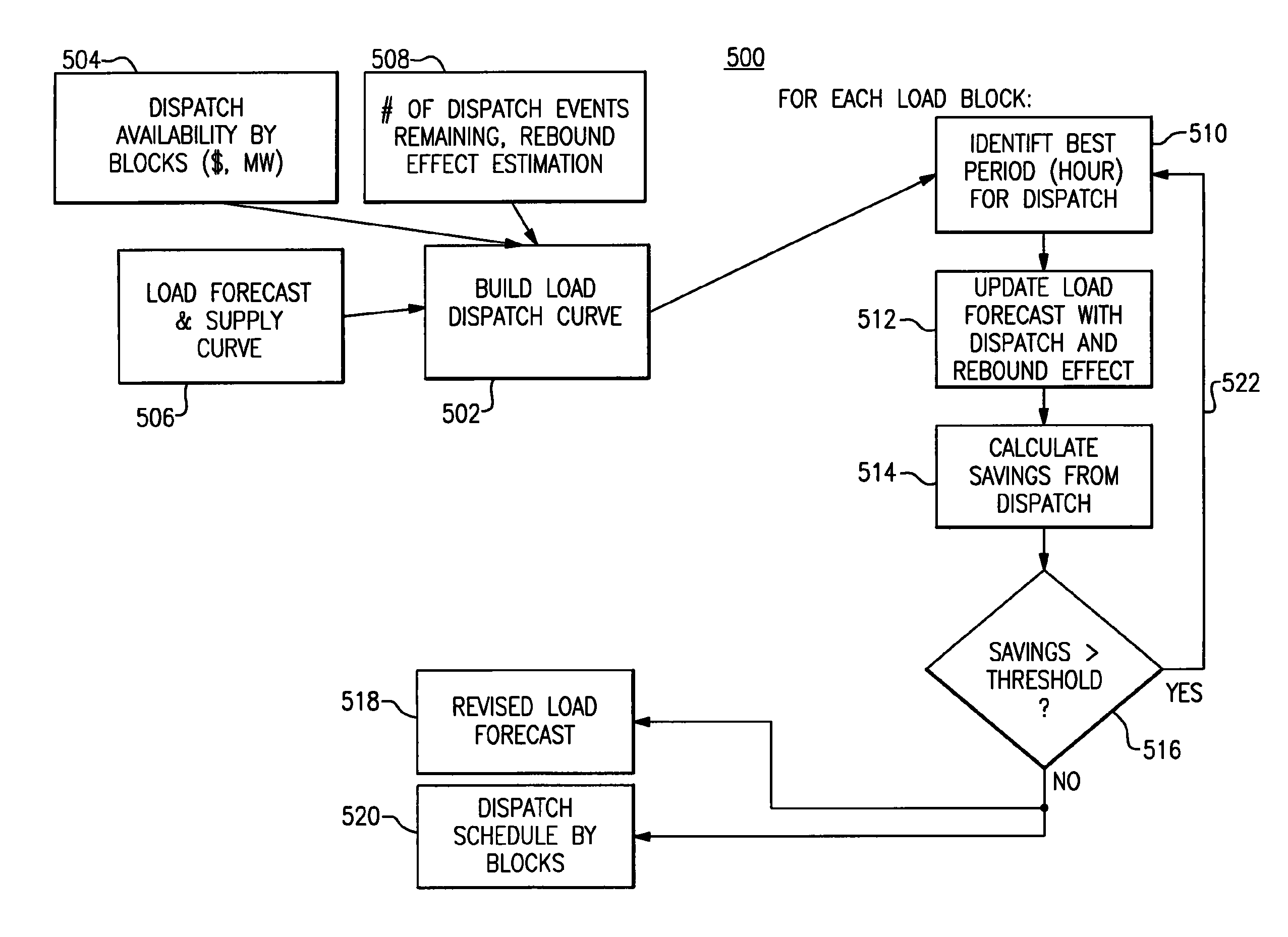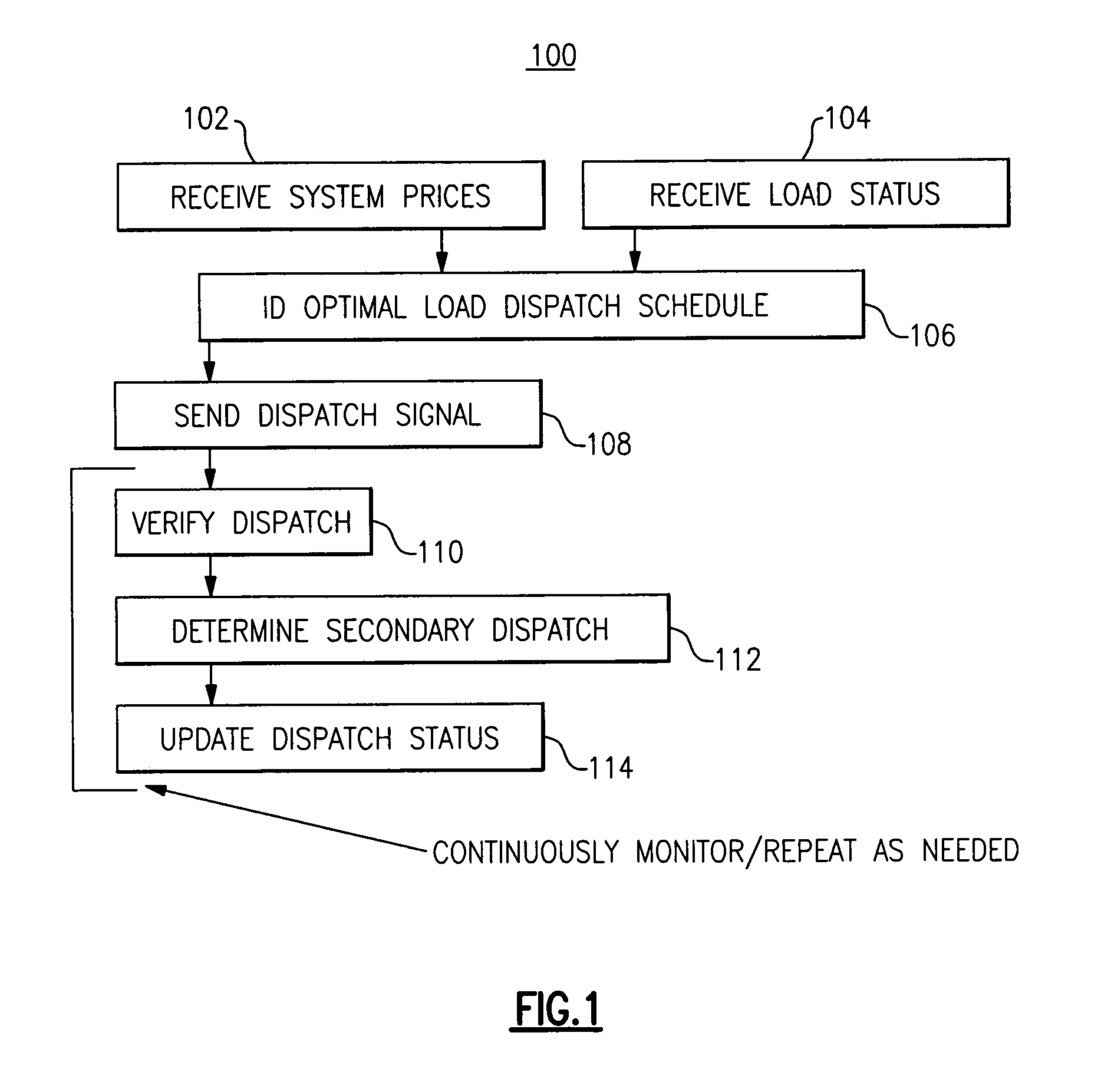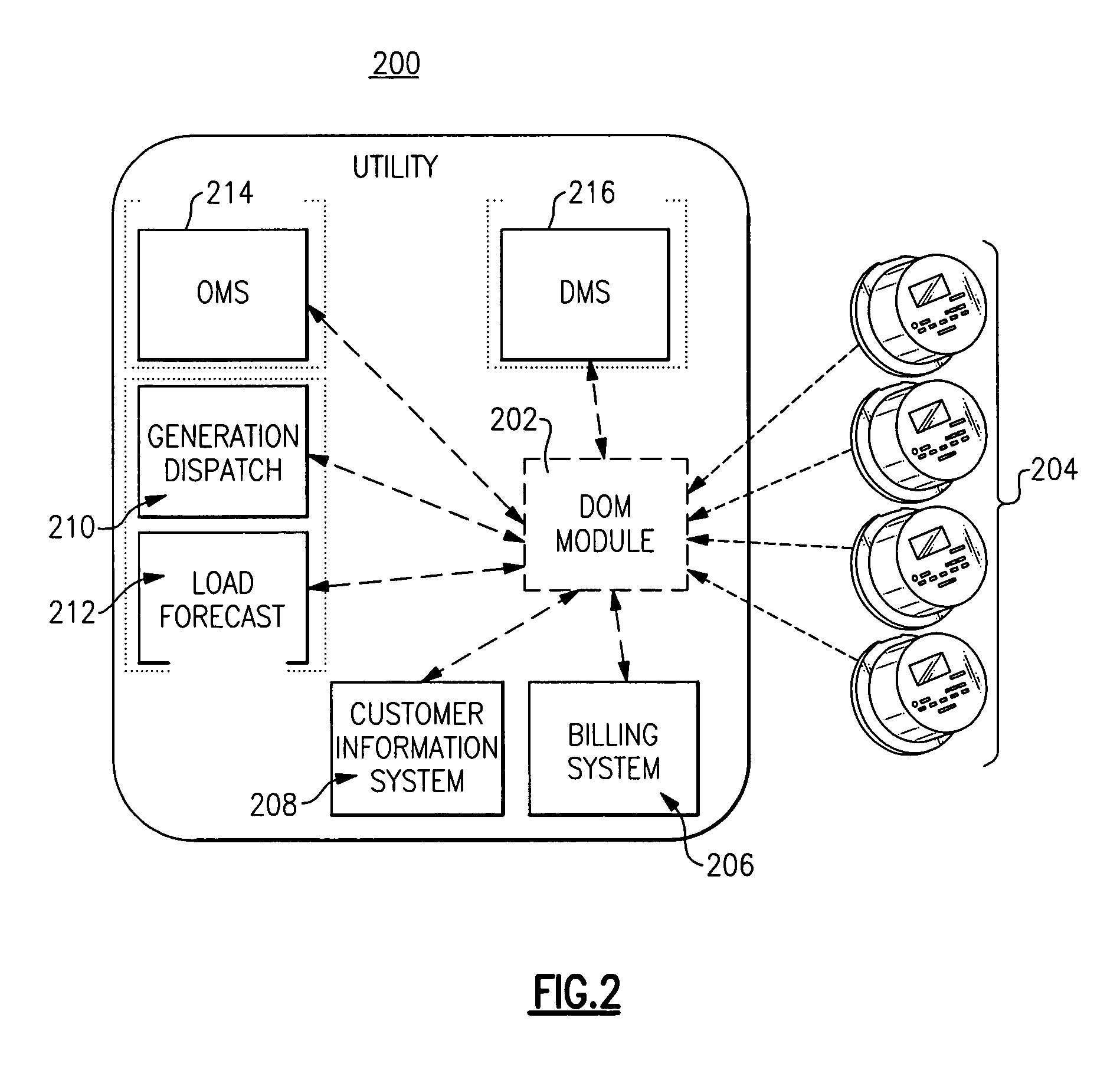Optimal dispatch of demand side electricity resources
a technology of demand side and electricity resources, applied in the direction of electric devices, process and machine control, instruments, etc., can solve the problems of increasing subsequent load, many types of demand will actually consume more than their own, and the existing demand response program does not capture the impact of shifting/deferring load
- Summary
- Abstract
- Description
- Claims
- Application Information
AI Technical Summary
Benefits of technology
Problems solved by technology
Method used
Image
Examples
Embodiment Construction
[0033]The embodiments described herein are directed to inclusion of the rebound effect when dispatching demand resources. Since the time scales for many demand response implementations are on the order of hours, once a demand resource ahs been dispatched, it is not only likely unavailable for re-dispatch during the same day, but it is also likely that the dispatched demand will actually increase in subsequent hours or time periods. A significant rebound component may thus contribute to demand response for load shifting applications such as those associated with air conditioning.
[0034]Further, many demand response programs offer contracts to participants that limit the number of demand response events, e.g. interruptions / curtailments or critical peak pricing events over a given time period, e.g. monthly, annual, etc. It may be necessary to compare the economic benefits associated with dispatch during the current period of interest versus the likelihood of achieving greater benefits i...
PUM
 Login to View More
Login to View More Abstract
Description
Claims
Application Information
 Login to View More
Login to View More - R&D
- Intellectual Property
- Life Sciences
- Materials
- Tech Scout
- Unparalleled Data Quality
- Higher Quality Content
- 60% Fewer Hallucinations
Browse by: Latest US Patents, China's latest patents, Technical Efficacy Thesaurus, Application Domain, Technology Topic, Popular Technical Reports.
© 2025 PatSnap. All rights reserved.Legal|Privacy policy|Modern Slavery Act Transparency Statement|Sitemap|About US| Contact US: help@patsnap.com



